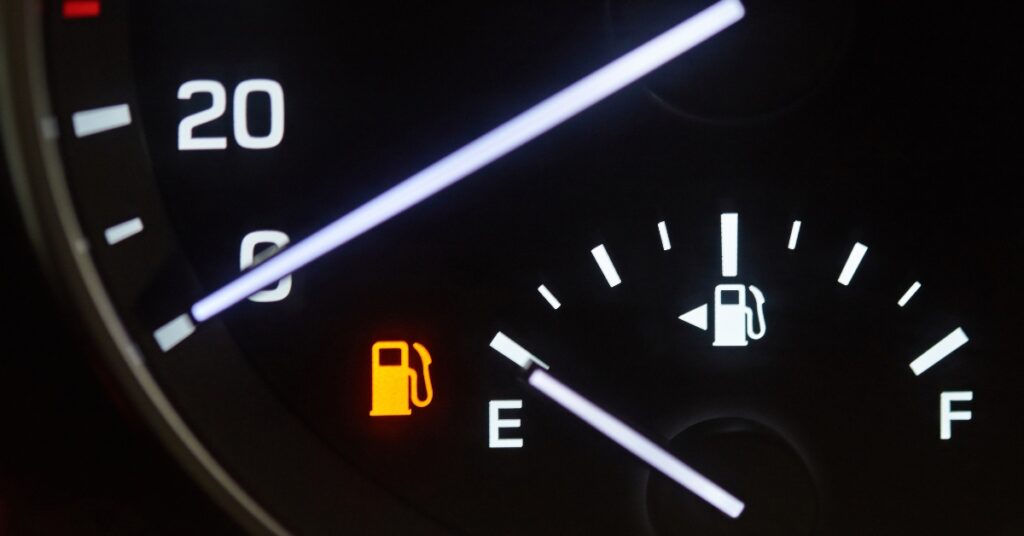How Far Can You Drive After the Gas Light Turns On?
We’ve all been there – the dreaded moment when the low fuel warning light illuminates on your dashboard, leaving you wondering how much further you can push it before needing to refuel. While it’s never a good idea to let your tank run too low, it’s helpful to know just how many miles you can expect to travel after the gas light comes on.
Understanding the Gas Light
The gas light, also known as the low fuel warning light, is designed to alert drivers when their fuel tank is running low. It typically turns on when the tank has about 1-2 gallons of fuel remaining, or when the fuel level drops to around 10-15% of the total tank capacity.It’s important to note that the gas light doesn’t necessarily mean your tank is completely empty. In fact, most vehicles will still have a small reserve of fuel even after the light turns on.
Factors Affecting Driving Range
The exact number of miles you can drive after the gas light comes on depends on several factors:
- Vehicle make and model: Different vehicles have varying fuel tank sizes and fuel efficiencies, which can impact the range.
- Driving conditions: Factors like terrain, weather, and traffic can affect your fuel economy and, consequently, your driving range.
- Driving habits: Aggressive acceleration, high speeds, and frequent braking can decrease your fuel efficiency and reduce your driving range.
Average Driving Range
In general, most vehicles can travel between 30 and 50 miles after the gas light turns on, with some larger vehicles like trucks and SUVs potentially going even further. However, it’s important to note that this is just an average, and your actual range may vary depending on the factors mentioned above.To get a more accurate estimate of your driving range, you can consult your owner’s manual or contact your vehicle’s manufacturer. Some vehicles even have a fuel range indicator that provides an estimate of the remaining miles based on your current fuel level and driving habits.
Risks of Running on Empty
While it may be tempting to push your luck and see how far you can go after the gas light turns on, it’s important to refuel as soon as possible. Running your tank too low can lead to several problems:
- Fuel pump damage: The fuel pump relies on the fuel in the tank to keep it cool and lubricated. Running on empty can cause the pump to overheat and fail prematurely.
- Engine stalling: If you run out of fuel completely, your engine will stall, leaving you stranded and potentially in a dangerous situation.
- Increased fuel system wear: Letting your tank run low can allow dirt and debris to enter the fuel system, leading to clogged filters and injectors over time.
- Reduced fuel economy: Driving with a low fuel level can actually decrease your fuel efficiency, as the fuel pump has to work harder to draw fuel from the bottom of the tank.
Tips for Avoiding the Gas Light
To avoid the stress and potential risks of running on empty, it’s best to refuel before the gas light turns on. Here are some tips to help you stay ahead of the game:
- Fill up when your tank is around 1/4 full: This will give you a buffer and prevent the gas light from coming on unexpectedly.
- Use fuel-efficient driving habits: Accelerate gently, maintain a steady speed, and avoid excessive idling to maximize your fuel efficiency.
- Plan ahead: If you’re going on a long trip or driving in an area with limited gas stations, make sure to fill up before you set out.
- Keep an eye on your fuel gauge: Get in the habit of regularly checking your fuel level so you can anticipate when you’ll need to refuel.
Frequently Asked Questions
1. What happens if I run out of gas?
If you run out of gas completely, your engine will stall, and you’ll be left stranded. You may also risk damage to your fuel pump and other components of your fuel system.
2. How accurate is the fuel range indicator?
The accuracy of your fuel range indicator can vary depending on your driving habits and conditions. It’s best to use it as a general guide and refuel before the range drops too low.
3. Can I damage my car by running on empty?
Yes, running your tank too low can lead to fuel pump damage and increased wear on your fuel system components over time.
4. How often should I refuel?
It’s generally recommended to refuel when your tank is around 1/4 full to avoid running on empty and to maintain a healthy fuel system.
5. What should I do if I run out of gas?
If you run out of gas, safely pull over to the side of the road and call for roadside assistance or a tow truck. Avoid pushing your vehicle, as this can be dangerous and may cause further damage.
Conclusion
While it’s tempting to see how far you can go after the gas light turns on, it’s always best to refuel as soon as possible. Running your tank too low can lead to fuel pump damage, engine stalling, and increased wear on your fuel system components. By following best practices and refueling regularly, you can keep your vehicle running smoothly and avoid the stress and potential risks of running on empty.For more information on fuel efficiency and vehicle maintenance, visit the U.S. Department of Energy’s website.



